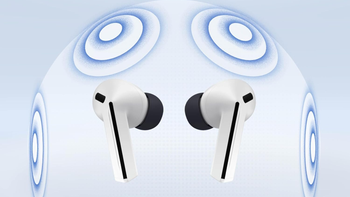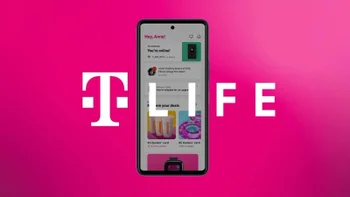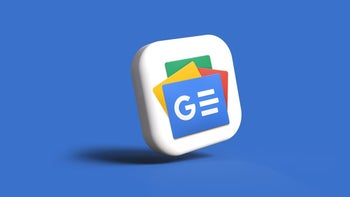You can now chat with a PhD-level AI that knows when to think harder for you
GPT-5 is now default across all tiers, offering expert answers on the fly.

OpenAI isn't wasting any time. Just a couple of days after dropping its first open-weight models in six years, the company has officially rolled out GPT-5 – and yes, even free users can start trying it today. The pitch? Across-the-board upgrades in coding, writing, safety, accuracy and more, with OpenAI calling it its best model yet.
GPT-5 is built as a unified system that knows when to answer quickly and when to take its time for deep, expert-level responses. As I mentioned above, all users get access, but Plus subscribers can use it more and Pro subscribers get GPT-5 Pro – an even beefier version with extended reasoning for tougher problems.
Under the hood, there is a "smart router" that decides on the fly whether to use the standard GPT-5 or the more advanced GPT-5 Thinking model based on your question's complexity, tool needs, or if you explicitly say something like "think hard about this." That router is constantly improving by learning from real usage data. And if you hit your GPT-5 limit, you will automatically drop into GPT-5 Mini to keep going.
OpenAI says it has made major strides in reducing hallucinations, improving how the model follows instructions, and cutting down on the "tell-you-what-you-want-to-hear" problem – all while dialing up performance in three key areas: writing, coding and health.
Yep, health. OpenAI claims GPT-5 is now better at flagging potential issues, tailoring answers to your knowledge level and location, and suggesting smart follow-up questions for your doctor. Still, you probably don't want it making your medical calls.
Another big shift? GPT-5 is now OpenAI's default reasoning model. Before, you had to manually select "Think Longer" to tap into advanced reasoning, meaning a lot of free users never knew it existed. Now it's just built in.

There are only three flavors of GPT-5: the standard model, GPT-5 Mini (for when you hit your limit) and GPT-5 Pro (exclusive to the $200/month Pro plan). Plus users get "significantly" more usage than free accounts, while Pro users can go unlimited.
The update also brings some nice extras to ChatGPT:
And of course, there is the safety angle. OpenAI says GPT-5 moves beyond the old "refuse or comply" training to something called safe completions – where the model tries to give you the most helpful answer possible while staying inside safety lines.
That might mean answering only at a high level, explaining why it can't go further, or offering safe alternatives. OpenAI says this approach handles tricky, dual-use topics more gracefully and avoids unnecessary refusals without opening the door to misuse.
And misuse is something that we already see happening with bad actors using AI for misinformation and scams. So, tech companies should indeed think more about safety (Galaxy phones, for example, might soon warn you about voice phishing) if they are giving us all such powerful tools.
Speaking of powerful tools, with Google and OpenAI locked in a head-to-head race, don't be surprised if we see a big Gemini AI update from Google any day now.
OpenAI says it has made major strides in reducing hallucinations, improving how the model follows instructions, and cutting down on the "tell-you-what-you-want-to-hear" problem – all while dialing up performance in three key areas: writing, coding and health.
GPT-5 is the first time that it really feels like you're talking to an expert in any topic. It reminds me of when the iPhone went from those giant, old pixel [screens] to the Retina Display, and then I went back to using one of those big pixelated things and I was like, 'Wow, I can't believe how bad we had it.'
– Sam Altman, OpenAI CEO, August 7, 2025

You can use GPT-5 to build websites or even create apps, or tap into its writing capabilities to help with everyday tasks like emails and editing. | Video credit – OpenAI
The update also brings some nice extras to ChatGPT:
- Chat color themes – with some exclusive shades for paying customers.
- Easier Google integration – ChatGPT can now automatically tap into Gmail, Google Calendar, and Contacts without you having to manually link them every time. Pro subscribers get it first next week, with others following.
- Better voice mode – OpenAI's Advanced Voice feature is now smarter at understanding tone and adapting on the fly. The older Standard Voice Mode is being retired, freeing up resources for a smoother, more natural voice experience.
And of course, there is the safety angle. OpenAI says GPT-5 moves beyond the old "refuse or comply" training to something called safe completions – where the model tries to give you the most helpful answer possible while staying inside safety lines.
And misuse is something that we already see happening with bad actors using AI for misinformation and scams. So, tech companies should indeed think more about safety (Galaxy phones, for example, might soon warn you about voice phishing) if they are giving us all such powerful tools.
Speaking of powerful tools, with Google and OpenAI locked in a head-to-head race, don't be surprised if we see a big Gemini AI update from Google any day now.
Follow us on Google News














Things that are NOT allowed:
To help keep our community safe and free from spam, we apply temporary limits to newly created accounts: